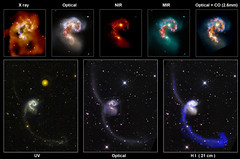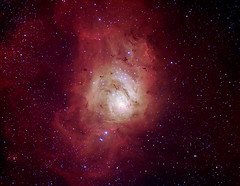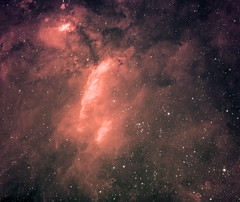Test image of M 8 (The Lagoon Nebula) from my backyard, 15 km North from Sydney’s city center, on 21st Aug 2019.
That was my first attempt to get the new equipment working. I was testing the Skywatcher AZ-EQ6 mount and the ZWO ASI120MM (guiding) and ZWO ASI178MC (main camera) with the ASIair. But I had plenty of problems to get the guiding working as the mount was not properly aligned to the South Celestial Pole (over Sydney, very difficult to see the faint stars using the polar scope of the mount). I had to use the drift method. After that, getting the ASIair properly guiding was hard as I couldn’t find any easy manual and never used PHD for guiding before.
This image combines 25 (of a series of 60) good 180s frames using the ZWO 183MC and my Skywatcher Black Diamond 80 (F=600mm, f/7.5. No darks, flats, biases or light pollution filter was used for this.
Later it was also tricky for me to play with the raw data: I have never used a color camera producing .FITS files before! It took me some time to get a good free(*) software for it and I found Siril. But the “bayer” decomposition didn’t work well with the ZWO cameras and my images had very weird colours.
In March 2020 I learnt a couple of extra things, including changing the bayer matrix from RGGB to GBRG for ZWO cameras and… bingo! So here it is the test image I got that night more than half a year ago! And still testing the equipment!
Ah, yes, stretching, colour contrast, saturation, levels, and luminosity with Photoshop.
Full resolution image in my Flickr.
Credit: Ángel R. López-Sánchez (AAO-MQ).
(*) Don’t get me wrong… I’ll get PixInsight eventually, when I get everything working well.










